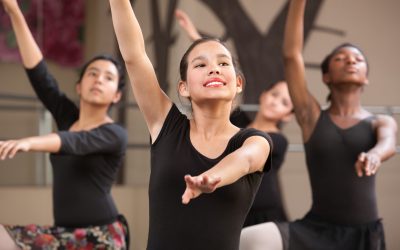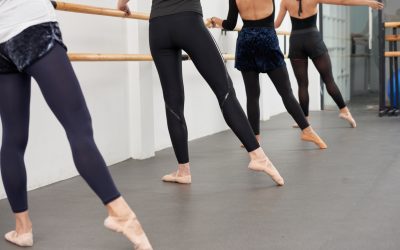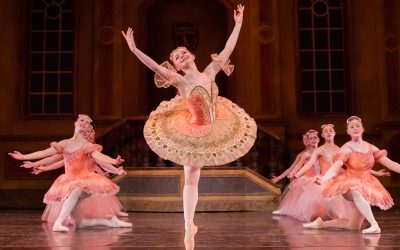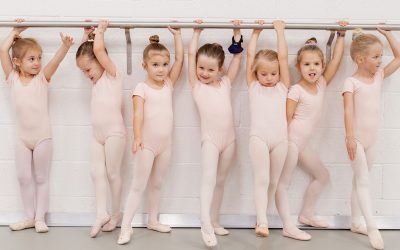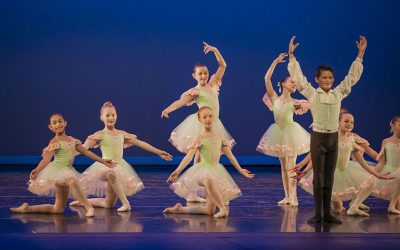How to Keep Your Child Motivated to Stick With Dance
There are many reasons to keep your child motivated to “stick with it,” including helping prevent them from having regret when they’re older, teaching them to focus on long-term gratification instead of short-term whims. Among these is teaching your child the important skill of grit, which is the ability to stick with things even when they get tough—and is one of the biggest indicators of success in children, according to researchers.
While grit and sticking with an activity such as dance may not come naturally to children, it is a skill that can be taught!
1. Tell them they need to follow-through for the season.
Often, a child’s desire to quit is short-lived. Let your child know that dance is a commitment, and they need to stick with it for the season—but that at the end of the season, they can quit if they’d like.
It can be tempting to force them to pick it up again the next season, but allowing them to decide to quit or not quit gives your child autonomy and can help them be less likely to quit or give up on an activity mid-season.
2. Remind them they’re part of a team.
Ballet is a team sport. Your child’s company and studio are depending on them for staging choreography, rehearsing, and progressing at the same level as the rest of the company. Talk to your child about the importance of being part of a team and how each member needs to do his or her part for the entire company to succeed.
3. Don’t give in “just this once.”
It can be tempting to give in and let your child skip a class “just this once.” Especially if they beg or negotiate or if you’re just plain too tired to hold the line. However, it can be important to the goal of helping your child stick with dance lessons not to give in. If you give in once, your child will learn that if they push in just the right way, they can make you give in again.
4. Consider a coupon system.
If you want to be able to give your child a “day off,” consider giving them a single “coupon” good for one day off that they may use once during the season. Once it’s gone, it’s gone. You may be surprised to find this helps cut back in arguments and that your child may not even end up using the coupon by the end of the season.
If you choose to implement this system, it’s important to do so at the very beginning of the dance season and not in response to your dancer asking to skip class (see reason #3 for why).
5. Start a gratefulness practice.
Get your child thinking positively about dance by starting a gratefulness practice. Get a small notebook, and after each class, ask your child to write one thing they are grateful for about their dance lessons. The next time they ask to skip or quit, remind them to pull out their notebook to remember why they are grateful for their dance class.
6. Uncover underlying issues.
Sometimes, students may want to quit dance because they are struggling and are either feeling embarrassed or discouraged. Try to get to the root of why your child doesn’t want to go. Is it more than just wanting a day off? If so, your child may benefit from private ballet lessons or may benefit from extra practice time at home. Talk to your child’s dance teacher about your child’s challenges—they will be able to help you come up with a solution.
7. Model grit at home.
Finally, the best way to motivate your child to stick with ballet when they want to give up is to model commitment and grit at home. Are you prone to starting projects or activities and not finishing them? This can signal to your child that quitting partway through is a natural part of the process. If you fight them on quitting dance, but they see you quitting your projects, you might even set the standard that only grown-ups get to quit, exacerbating the behavior in the future. Instead, do your best to model grit and follow-through at home.
Talk about the challenges you gave when sticking with something, but follow it up with why you’re going to continue the activity anyway. For instance, “Mommy really didn’t want to do her morning run today because I was tired and really wanted to just start my workday. But I made a commitment to myself to complete this marathon training program, and I knew I would feel good after my run—and know how good it will feel to run my first marathon in 3 months. So I decided to go for my run anyway, and 10 minutes in, I was so glad I did because it felt great.”
Like most things, grit is easier said than done, but as your child’s biggest role model, what they see at home can have a huge influence on their behavior now and in the future.
Is your child struggling to stick with dance lessons?
If your Central Utah Ballet student is struggling, let us know! We are here to help.
About the Author

Jennie Creer-King
Owner & Artistic Director
Jennie Creer-King is the owner and artistic director of Central Utah Ballet Academy. She is an award-winning dancer, instructor, and choreographer. Among her awards include “Best School Award” by the Youth American Grand Prix, “Best of State” in Choreography and Youth Performing Group, and the Presidential Scholar’s Teacher Recognition Award. Jennie has a Bachelor's Degree from the University of Utah School of Dance with an emphasis in Ballet Performance and a Master's Degree from the University of Utah School of Dance emphasis in teaching pedagogy and choreography.
You may also be interested in...
5 Reasons You Should Take Adult Ballet Classes
As adults, it can be difficult to prioritize the things we love–especially when we have a family whose interests seem to trump our own. However, with self-care growing in the spotlight, the need to make time for our passions is being looked upon as less of a luxury...
FAQs About Central Utah Ballet’s Children’s Dance Programs
Central Utah Ballet offers ballet classes for children 3+. For toddler and preschool students ages 3-5, explore our pre-ballet classes. For students 6+, please take a look at our children’s ballet classes. Below are some frequently asked questions about our program....
About Adult Ballet Classes at Central Utah Ballet
Central Utah Ballet is proud to offer ballet dance classes for adults at our studio in Lehi, Utah. As dancers ourselves, we know that passion for ballet doesn’t diminish with age. Our ballet classes give adult dancers an opportunity to fuel their passion. What Adult...
What do Kids Learn in Toddler Ballet Classes?
Three or four years old may seem early to start a child in ballet, but there are many new skills a child will learn in these classes. 5 Things Children Learn in Toddler Ballet Classes There are many reasons parents enroll their toddlers in toddler ballet classes....
Can You Take Private Ballet Lessons?
There are many reasons dancers may be interested in private ballet lessons. They may be aspiring dancers who seek to improve their skills and technique. They may be preparing for an opportunity such as a solo, audition, or scholarship opportunity. They may even be...
What Kind of Dance Lessons are Best for a 3-Year-Old?
From hip-hop, tap or creative movement, the options for starting your child in dance classes are endless. If the goal is to give them a few hours to get out their jitters, then perhaps what you sign them up for doesn’t matter. However, if the dream is for your cherub...
Should I Put My Son in Ballet?
If you have a son interested in ballet, you might have wondered if you should enroll him in ballet lessons. Though supporting our children in their passions should be intuitive, it does not mean that parents don’t worry about the implications of certain choices. Will...
What is a Trainee in Ballet?
If you are an aspiring ballet dancer, you may have heard other dancers talking about ballet trainee programs. But what, exactly, is a trainee in ballet and what should you look for in trainee programs? We answer these questions below. What is a Trainee in Ballet? A...
At What Age Can Toddlers Start Ballet?
What Age Can Toddlers Start Ballet? Toddlers can start ballet as early as 3 years old. However, most ballet studios will require that the child is potty trained. These early toddler classes will typically be shorter than ballet classes for older children, usually...


